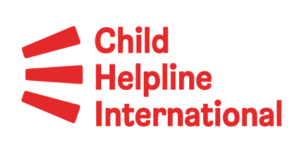According to the UNCRC, no children and young people should be discriminated against when children’s rights are realised (Article 2), and children also have the right to special protection and support if they are refugees (Article 22). In reality, migrant children and youth remain at particular risk of rightlessness. Child helplines worldwide are increasingly coming into contact with children and young people who have been forcibly displaced or who have migrated for other reasons. Children who have experienced war, trauma and who have had to flee their countries are a highly vulnerable group at particular risk of discrimination, psycho-social health issues and different forms of exploitation and abuse.
As detailed in the stories from our child helpline members below, counsellors play an important part in ensuring children feel heard, and support them through traumatic periods, before, during and after migrating. They also refer these children to other specialised service providers, and continue supporting the child through these difficult times.
Bridging the language barrier
Children on the move are particularly at risk of not being able to access support and advice. Among other reasons, the language barrier can make it difficult for child helpline counsellors and other support actors. The Smile of the Child in Greece noticed this need and reached out to SAWA, Palestine, to work together to create a collaborative structure to improve support for Arabic-speaking children on the move residing in Greece.
From April 2018, the child helplines at Smile of the Child and SAWA have been working together. When the counsellors at the Smile of the Child receive a call from a child who does not speak Greek or English, they can add a counsellor from SAWA as part of a three-way call. The counsellors at SAWA are better suited to support with translation than a regular translator, as they are familiar with psycho-social terminology and children’s rights.
Comforting victims of child trafficking
A child helpline received a call from a law enforcement officer about a child they had come into contact with at the airport. They asked for assistance in moving the child from the airport to the on-duty hospital. The child helpline was also informed that an adult man had been was arrested for trafficking.
A representative from the justice system was informed, and they gave the order for the child to be taken to the hospital by the child helpline’s social workers and a psychologist. This is a standard procedure in this child helpline’s country for minors who are in danger for whatever reason, or otherwise found unaccompanied. In such situations the child helpline’s trained volunteers stay with the child during their time in hospital and try to strengthen and empower them through play, laughter and affection. Subsequently, actions are taken to reunite the child with their family and support them through a difficult time.

